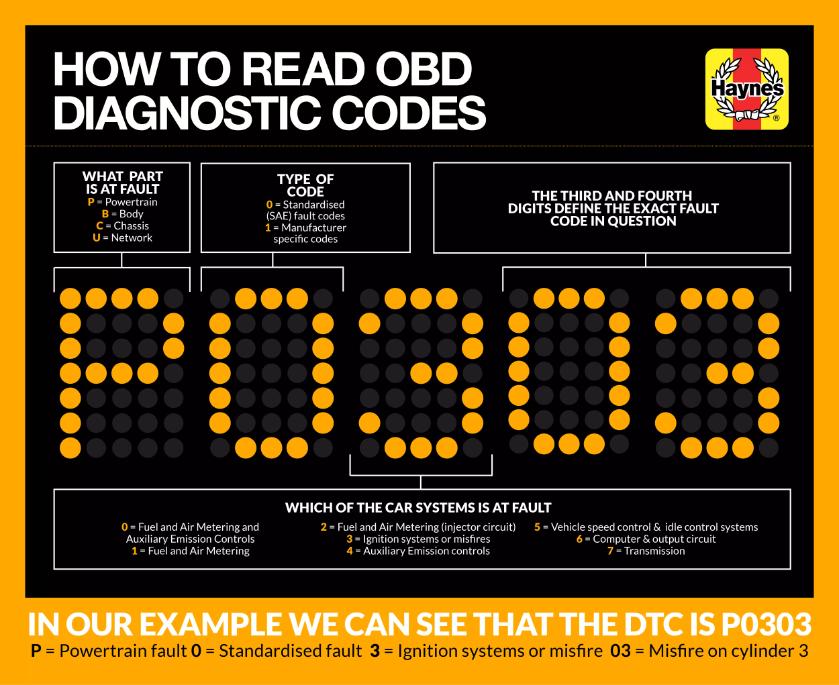Using the Detailed DTC Chart for Accurate Diagnostics
Accurate diagnostics are crucial for maintaining the health and performance of the 2JZ-GTE engine. One of the most effective tools for diagnosing engine issues is the Detailed Diagnostic Trouble Code (DTC) chart. DTCs provide specific codes that indicate various problems within the engine, helping you pinpoint the exact issue quickly and efficiently.
In this comprehensive guide, we will explore the importance of DTCs, how to use the Detailed DTC Chart, and provide practical examples to enhance your diagnostic skills. By leveraging this chart, you can ensure your engine runs smoothly and address issues before they escalate.
Understanding DTCs and Their Importance
Diagnostic Trouble Codes (DTCs) are specific alphanumeric codes generated by the engine’s onboard diagnostics system when it detects a problem. These codes help identify issues in various engine components and systems.
Accurate DTC readings are crucial for maintaining engine health and performance. They provide a clear indication of what is wrong, allowing for precise diagnostics and efficient repairs.
DTCs play a vital role in identifying and resolving engine issues. They reduce guesswork, save time, and help ensure that repairs are effective.
Key Components of a Detailed DTC Chart
Code Description:
- Function: The DTC chart includes descriptions of various codes, explaining what each code means and which part of the engine is affected.
- Example Codes: Common DTCs for the 2JZ-GTE engine include:
- P0300: Random/Multiple Cylinder Misfire Detected
- P0130: O2 Sensor Circuit Malfunction (Bank 1, Sensor 1)
- P0440: Evaporative Emission Control System Malfunction
Possible Causes:
- Function: The chart lists potential causes for each DTC, helping to narrow down the exact issue.
- Example Causes:
- P0300: Faulty spark plugs, ignition coils, or fuel injectors.
- P0130: Damaged O2 sensor, wiring issues, or exhaust leaks.
- P0440: Loose gas cap, damaged EVAP system components, or vacuum leaks.
Diagnostic Procedures:
- Function: The chart outlines recommended diagnostic procedures for each DTC.
- Example Procedures:
- P0300: Check spark plugs and ignition coils, inspect fuel injectors, and perform a compression test.
- P0130: Test the O2 sensor, inspect wiring and connectors, and check for exhaust leaks.
- P0440: Inspect the gas cap, check EVAP system hoses and valves, and perform a smoke test to detect leaks.
Repair Recommendations:
- Function: The chart suggests potential repairs or replacements needed to resolve each DTC.
- Example Repairs:
- P0300: Replace faulty spark plugs or ignition coils, clean or replace fuel injectors.
- P0130: Replace the O2 sensor, repair or replace damaged wiring, fix exhaust leaks.
- P0440: Tighten or replace the gas cap, repair or replace EVAP system components, fix vacuum leaks.
Using the Detailed DTC Chart for Accurate Diagnostics
Step-by-Step Guide:
- OBD-II Scanner:
- Function: An OBD-II scanner reads DTCs from the engine’s computer and provides real-time data on various engine parameters.
- Usage: Connect the OBD-II scanner to the diagnostic port, turn on the ignition, and retrieve the DTCs.
- Reading the DTC Chart:
- Function: Use the DTC chart to interpret the codes retrieved by the OBD-II scanner.
- Process: Match the retrieved DTCs with the descriptions in the chart to understand the issues.
- Diagnosing and Resolving Issues:
- Misfire Codes (e.g., P0300):
- Diagnosis: Check spark plugs, ignition coils, and fuel injectors.
- Resolution: Replace faulty components and ensure proper ignition timing.
- Oxygen Sensor Codes (e.g., P0130):
- Diagnosis: Test the O2 sensor, inspect wiring, and check for exhaust leaks.
- Resolution: Replace the O2 sensor or repair damaged wiring.
- EVAP System Codes (e.g., P0440):
- Diagnosis: Inspect the gas cap, check EVAP system hoses, and perform a smoke test.
- Resolution: Tighten or replace the gas cap, repair or replace EVAP system components.
- Misfire Codes (e.g., P0300):
Case Study:
- Example: A 2JZ-GTE engine experiences rough idling. An OBD-II scan reveals a P0300 code. Using the detailed DTC chart, the issue is traced to a faulty ignition coil, which is then replaced to resolve the problem.
Optimizing Diagnostics with the DTC Chart
Benefits of Using the DTC Chart:
- Improved Accuracy: The detailed DTC chart enhances diagnostic accuracy by providing clear descriptions and potential causes for each code.
- Efficient Repairs: Accurate diagnostics lead to faster and more efficient repairs, reducing downtime and preventing further damage.
Tips for Effective Use:
- Regular Monitoring: Regularly check for DTCs to catch issues early and prevent major problems.
- Professional Assistance: Seek professional help for complex diagnostics and repairs to ensure accurate and effective solutions.
Conclusion
Using the detailed DTC chart is essential for accurate diagnostics and efficient repairs of the 2JZ-GTE engine. By understanding and interpreting DTCs correctly, you can maintain your engine’s performance and address issues promptly.
Utilize the DTC chart regularly for monitoring and diagnosing engine issues. If you encounter any problems, seek professional help to ensure all components are functioning correctly.
Frequently Asked Questions (FAQ)
What are Diagnostic Trouble Codes (DTCs)?
DTCs are specific alphanumeric codes generated by the engine’s onboard diagnostics system to indicate various problems within the engine.
How do DTCs help in diagnosing engine issues?
DTCs provide specific information about the location and nature of engine issues, allowing for precise diagnostics and efficient repairs.
What tools do I need to read DTCs?
You will need an OBD-II scanner to read DTCs and retrieve real-time data on various engine parameters.
Can I diagnose DTCs myself, or should I go to a professional?
You can diagnose some issues yourself with the right tools and knowledge. However, for complex problems or if you’re unsure, it is best to seek professional help.
What are the signs that my engine has a DTC issue?
Signs include the check engine light illuminating, rough idling, decreased fuel efficiency, engine misfires, and unusual engine performance issues.
